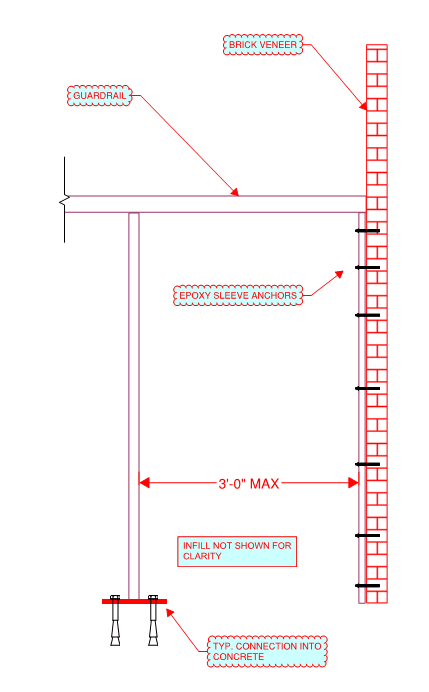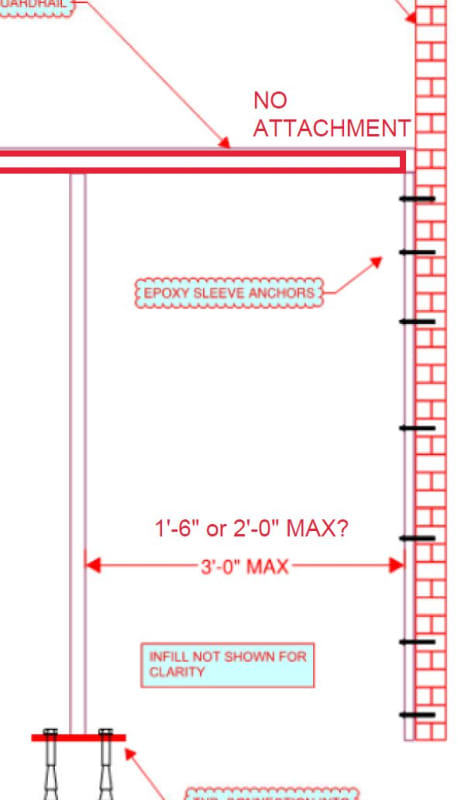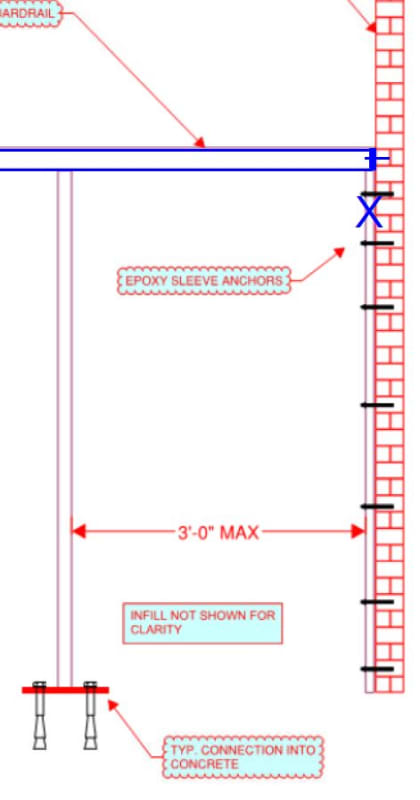Hey everyone!
I have a customer who wants to support a guardrail with brick veneer. The reasoning is that the brick is already installed and removing the brick to attach to the wall behind is not cost effective at this point in the project. See below for a very rough sketch that is not to scale:

I have always been under the impression that you could not attach directly to brick veneer for any significant loading (i.e. decks). One of the guys in the office said that you can count on brick veneer for lateral stability (not seismic or wind resistance, but traction), but never gravity loads. He said for a guard under this load scenario, I could use the brick veneer. Hilti has some options and load values for sleeve anchors into hollow masonry, so I can work through a design, but I'd like to be able to back up my choice to attach to brick veneer with some sort of code reference. So far, I have not seen any.. Have any of you encountered this type of connection and do you have any thoughts on the ability brick veneer to resist a 200lbf load imparted from the guardrail onto the wall?
Thanks in advance!
I have a customer who wants to support a guardrail with brick veneer. The reasoning is that the brick is already installed and removing the brick to attach to the wall behind is not cost effective at this point in the project. See below for a very rough sketch that is not to scale:

I have always been under the impression that you could not attach directly to brick veneer for any significant loading (i.e. decks). One of the guys in the office said that you can count on brick veneer for lateral stability (not seismic or wind resistance, but traction), but never gravity loads. He said for a guard under this load scenario, I could use the brick veneer. Hilti has some options and load values for sleeve anchors into hollow masonry, so I can work through a design, but I'd like to be able to back up my choice to attach to brick veneer with some sort of code reference. So far, I have not seen any.. Have any of you encountered this type of connection and do you have any thoughts on the ability brick veneer to resist a 200lbf load imparted from the guardrail onto the wall?
Thanks in advance!


